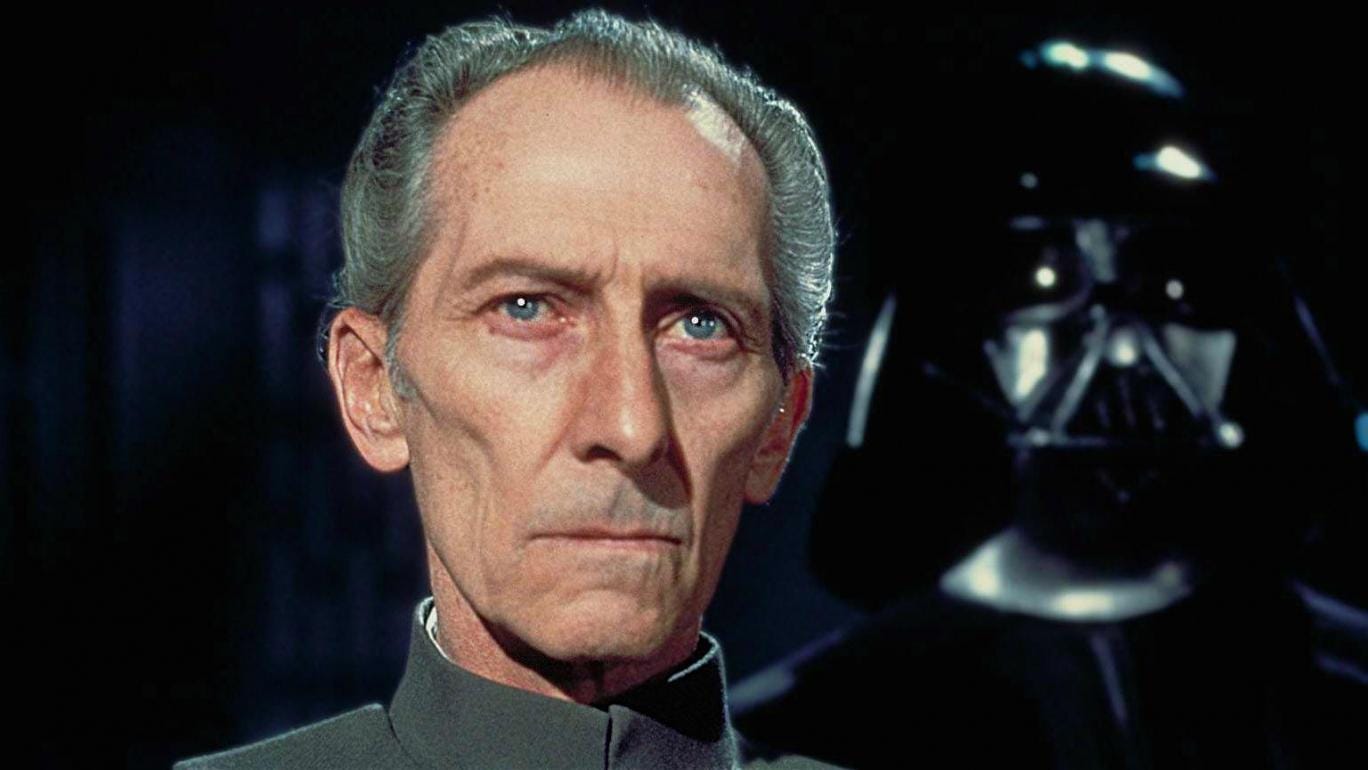Via Independent.co.uk:
*WARNING: SPOILERS FOR ROGUE ONE: A STAR WARS STORY AHEAD*
If there was one great secret surrounding the release of the first of the planned Star Wars anthology films, it was the revelation Rogue One bore an even stronger connection to the franchise’s past than previously thought.
Rogue One, of course, follows a wayward band of Rebel fighters brought together for one improbable mission: steal the plans for the Death Star. These events, of course, directly link into the first scenes of A New Hope; when Princess Leia is seen concealing the plans in R2-D2 before she’s captured by the Galactic Empire.
What had been kept hidden, however, was that two iconic characters from A New Hope itself would actually be brought back through the magic of CGI: Peter Cushing’s Grand Moff Tarkin and Carrie Fisher’s Princess Leia.
Gareth Edwards defended the film’s risky manoeuvre in the Radio Times, stating: “We were talking about it, and you sort of lay out the movie, and as you start laying it you go, you know what, you’ve gotta have these certain characters in there, and I dunno how we’d do it. Like, what do we do? Do we cast someone who looks like them? Do we not have them? Do we just hear about them?”
He continued, “You know, to be honest, a lot of people were nervous the whole time, like, is this gonna happen? And then we went all or nothing in.”
“A lot of us got into the industry because of Star Wars, and we all have this love of the original source material,” John Knoll, the chief creative officer at Industrial Light & Magic and a visual effects supervisor on Rogue One told The New York Times; arguing that the CGI effects are, “in the spirit of what a lot of Star Wars has done in the past.”
“If he’s not in the movie, we’re going to have to explain why he’s not in the movie,” added Kiri Hart, a Lucasfilm story development executive and Rogue One co-producer. “This is kind of his thing.”
The effect was achieved by using English actor Guy Henry (Harry Potter and the Deathly Hallows: Part One and Two, Holby City) during principal photography, as he possesses a similar build and stature as Cushing’s, who passed away in 1994, and could speak in a similar manner.
Henry wore motion capture materials on his head, so that his face could eventually be replaced with a digital likeness of Cushing’s; though the team did have a back up plan in place in case things didn’t work out, either transferring lines to other characters or having Tarkin appear only in hologram communications.
Lucasfilm and Industrial Light & Magic state the re-creation of Cushing was done entirely with the approval of the actor’s estate; though they were well aware of the potential ethical “slippery slope” involved in bringing back the dead through a digital likeness, Knoll doesn’t believe this has opened the door to the technique being abused in the future.
“I don’t imagine that happening,” Mr. Knoll said. “This was done for very solid and defendable story reasons. This is a character that is very important to telling this kind of story. It is extremely labour-intensive and expensive to do. I don’t imagine anybody engaging in this kind of thing in a casual manner.”
Knoll stressed the same importance when it came to re-creating Carrie Fisher (who passed away on 27 December)’s Princess Leia, by using actor Ingvild Deila and a digital likeness of Leia based on footage from A New Hope.
“To deliver on that moment of hopefulness, that is really underscored by the fact that you do get to see her face,” Hart stressed. “That’s the best possible use of effects, to enhance the meaning and the emotion of the experience for the viewer.”

